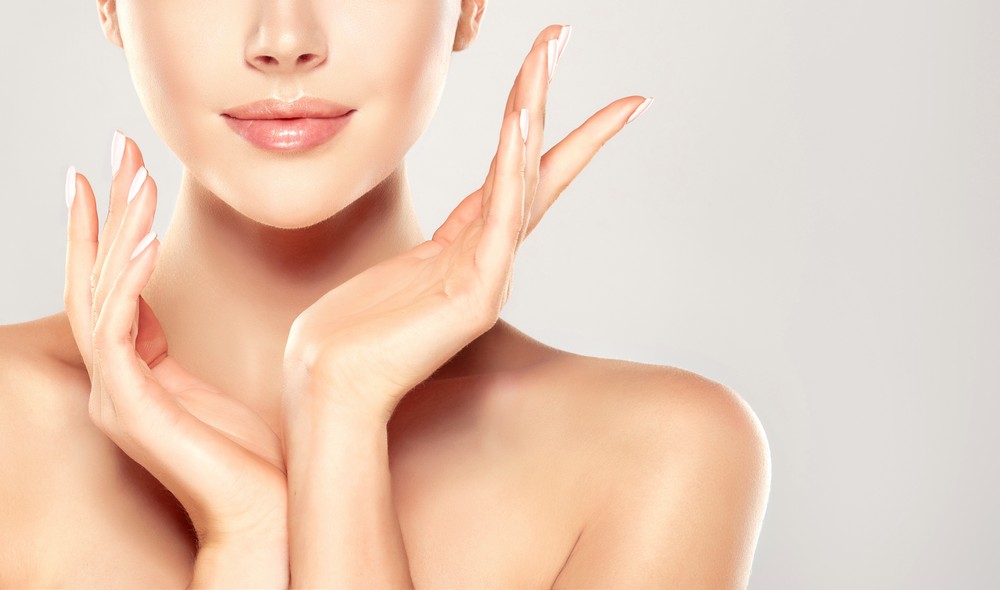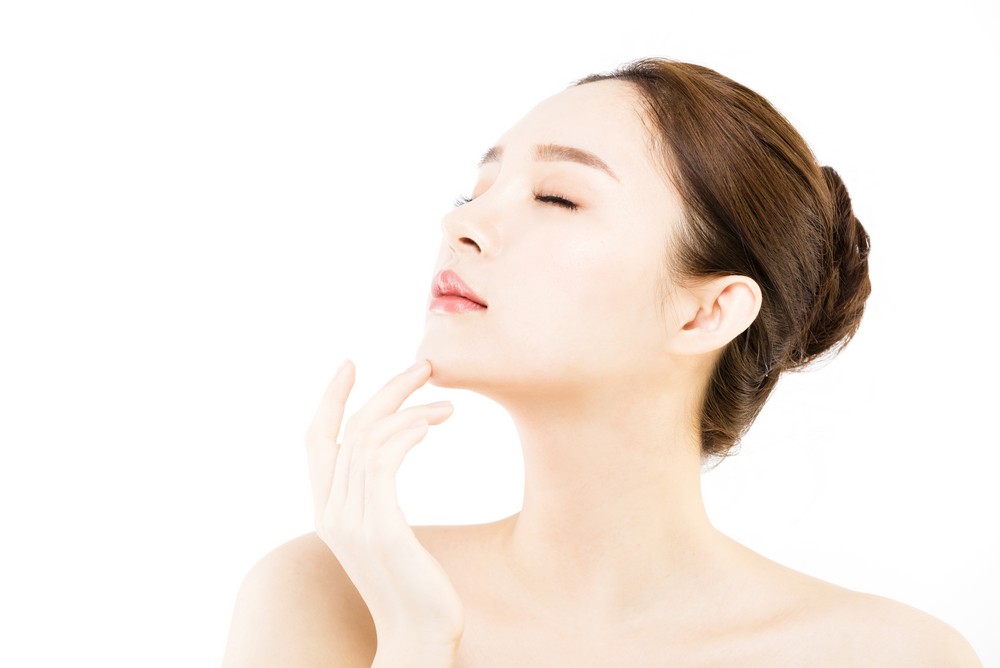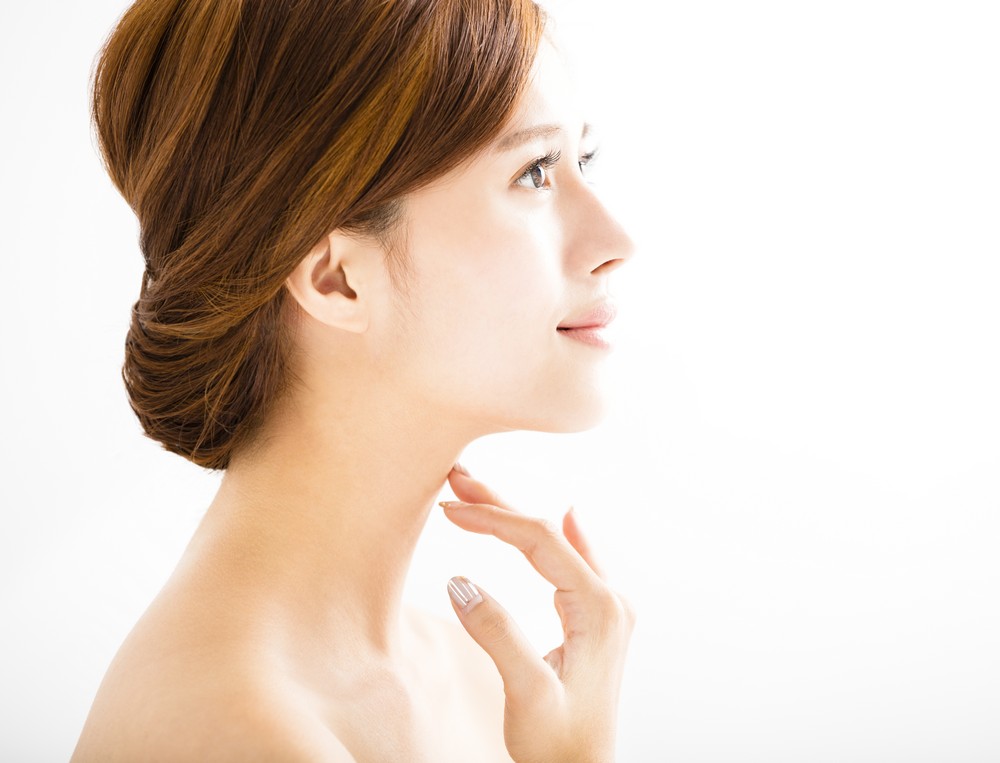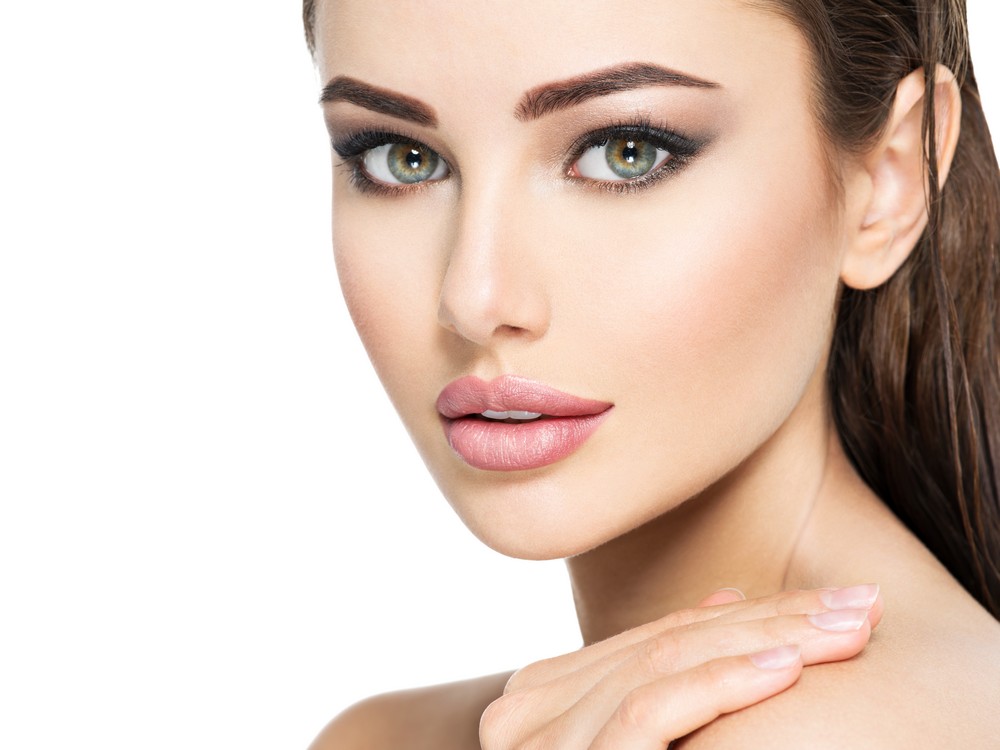Microdermabrasion
Microdermabrasion is a popular non-invasive cosmetic treatment that works by gently exfoliating the top layer of the skin, revealing healthy skin that is more even in tone and texture. Microdermabrasion has the ability to treat pigmentation, diminish acne scars, and brighten the complexion. Frequently performed by dermatologists and estheticians, this quick and easy procedure is sought out by many individuals looking for a quick skin rejuvenation treatment. Utilizing the various types of microdermabrasion treatments available, including HydraFacial and crystal and diamond microdermabrasion, Dr. Michele Green in NYC can cater to an individual’s aesthetic goals and preferences with essentially no downtime.
Skin rejuvenation is one of the most popular goals in cosmetic dermatology. Even with the best skincare routine and consistent sunscreen use, over time, various signs of aging become apparent, from sun spots and fine lines to discoloration and sun damage. These skin concerns, although often part of the natural aging process, can negatively affect self-esteem and confidence. Thankfully, there are various non-invasive cosmetic treatment options, including microdermabrasion, available at Dr. Green’s office to help refresh and rejuvenate the skin and restore a youthful appearance without having to visit a plastic surgeon.
If you are frustrated by the appearance of uneven skin tone or are bothered by skin texture, scarring, or stretch marks, Dr. Green is here to help. Dr. Michele Green is a board-certified cosmetic dermatologist in New York City with over two decades of experience in skin rejuvenation, anti-aging, laser treatments, Botox injections, dermal fillers, and skincare. Her holistic approach and artful skills are sought out by patients from the East to West Coast and she is consistently voted as one of the best dermatologists in New York by Castle Connolly, New York Magazine, and Super Doctors. Whether you are interested in microdermabrasion or a HydraFacial, Dr. Green will carefully listen to your concerns and aesthetic goals and create a customized treatment plan that is both safe and effective for your specific skin type.
What is a microdermabrasion treatment?
Microdermabrasion is a minimally invasive cosmetic procedure that aims to renew skin tone and texture and improve sun damage, fine lines, acne scars, age spots, and other skin concerns. Microdermabrasion gently exfoliates to remove the top layer of the skin, removing any impurities and dead skin cells to make way for healthy new skin that looks and feels smoother. By removing impurities on the superficial layer of the skin, the skincare products that are applied subsequently are able to penetrate deeper into the skin to deliver maximum benefits.
Two popular types of microdermabrasion treatments include crystal and diamond microdermabrasion. Crystal microdermabrasion, the traditional microdermabrasion treatment, uses a specialized handpiece that gently sprays small crystals, usually aluminum oxide or sodium bicarbonate, to sand away the outer layer of the skin. Diamond microdermabrasion uses a diamond-tipped handpiece directly on the skin to gently exfoliate or “buff” the superficial layer of the skin. HydraFacial, a medical-grade hydradermabrasion treatment, has risen in popularity since its invention in 1997 to not only deeply cleanse the pores and exfoliate the skin, but also deliver maximum hydration and nourishment.
How does microdermabrasion work?
During microdermabrasion treatments, dermatologists and estheticians utilize a specialized handheld device that gently removes or sands the superficial layer of the skin. The top layer of the skin contains a buildup of dead skin cells along with dirt and debris from the environment and sebum or oil that was collected on the skin throughout the day. Furthermore, exposure to the sun stimulates melanocytes (pigment-producing skin cells) to produce melanin, which shows as sun spots, age spots, and melasma on the surface of the skin. There are two popular types of microdermabrasion treatments: crystal and diamond. HydraFacial is a medical-grade hydradermabrasion system that gained popularity more recently because of its ability to deeply cleanse and exfoliate the skin with the added bonus of nourishing and hydrating serums for moisture and glow.
Crystal Microdermabrasion
Crystal microdermabrasion is a minimally invasive skin rejuvenating treatment that utilizes a specialized, crystal-emitting handpiece that gently sprays small crystals to sand away the outer layer of the skin. Common crystals used include aluminum oxide and sodium bicarbonate. The dead skin cells that are exfoliated are suctioned off, making way for new, healthy skin cells that are more even in tone and texture to thrive. Crystal microdermabrasion, also known as microderm, is considered the traditional microdermabrasion treatment, as it was the first skin-resurfacing procedure to “sand” the skin. After the recommended series of crystal microdermabrasion sessions, the end result is a more radiant, even, and youthful complexion.
Diamond Microdermabrasion
Diamond microdermabrasion is also minimally invasive, using a specialized diamond-tipped handpiece to gently remove the top layer of the skin that holds dead skin cells, dirt, and debris. The rough, diamond dust-coated edge of the hand-held device is applied directly to the skin by the dermatologist or esthetician to “buff” the skin. The level of roughness of the diamond tip can be customized depending on the individual’s skin needs, and the suction can also be adjusted, lowering the setting around the eyes or on sensitive skin. Many people prefer the diamond over crystal microdermabrasion because the diamond particles are gentler on the skin.
HydraFacial
HydraFacial is one of the most popular non-invasive cosmetic treatments available, with a HydraFacial treatment performed every 15 seconds across 80 different countries daily. HydraFacial is a medical-grade hydradermabrasion system that consists of a three-part regimen designed to deeply cleanse, exfoliate, and intensely hydrate for full skin rejuvenation. The specialized vacuum handpiece utilizes different tips to exfoliate the skin at various levels, mimicking the results of microdermabrasion. The handpiece delivers nourishing and hydrating serums to the skin while suctioning impurities and oil buildup out of the pores. A light glycolic and salicylic acid peel is applied to “loosen” any sebum, dead skin cells, and debris clogged in the pores to prep for the vacuum handpiece to remove them. HydraFacial can be beneficial for those experiencing hyperpigmentation, rosacea, dry skin, fine lines, skin congestion, and acne. The various HydraFacial Boosters, such as Britenol, Dermabuilder, RegenGF, and Rozatrol, allow the treatment to be customized and catered to individual needs and skin goals.
Many people prefer HydraFacials over traditional microdermabrasion treatments because it offers additional hydrating and nourishing perks in conjunction with the gentle exfoliation that microdermabrasion achieves. By deeply cleansing the pores and removing the top layer of dead skin cells, it allows for the specialized Booster serums and hydrating hyaluronic acid serum to deeply absorb into the skin and deliver maximum benefits. HydraFacial is a quick 30-minute treatment with zero downtime that leaves your skin clean and glowing, making it a perfect lunchtime skin rejuvenation treatment for those with busy lives.

What does microdermabrasion do?
Microdermabrasion is able to address various skin concerns, including dullness, uneven skin tone and texture, age spots, acne scars, and sun damage. This minimally invasive procedure works by gently exfoliating the top layer of the skin that holds pigmentation, dead skin cells, dirt and debris, and textural issues. This also allows for nourishing ingredients in skincare products to penetrate deeper and deliver maximum benefits. The method of exfoliation depends on the type of microdermabrasion. For example, the crystal microdermabrasion sprays small crystals, typically aluminum oxide or sodium bicarbonate, to remove dead skin cells through friction. On the other hand, diamond microdermabrasion uses a specialized diamond-tipped handpiece directly on the skin to rough away the superficial layer of the skin. Because this treatment does not require downtime, microdermabrasion is appealing to many patients with busy lives and tight schedules. Microdermabrasion treatment performed by a dermatologist is different from at-home kits, as in-office treatments go deeper into the skin.
Does microdermabrasion work?
Yes! Microdermabrasion works on all skin types and tones to improve the appearance of dullness and aging. Microdermabrasion works by gently exfoliating the top layer of the skin, removing impurities like oil and dead skin cell buildup, making way for healthy new skin cells that are more even in tone and texture to be revealed. After the series of microdermabrasion sessions, the skin will look brighter, tighter, and more youthful. Because microdermabrasion treatments gently exfoliate only the superficial layer of the skin, the treatment holds a minimal risk of unwanted pigmentation or scarring. Still, let the provider know in advance if you have a history of abnormal scarring or sensitive skin to avoid unwanted side effects.
As discussed, microdermabrasion treats the very top layer of the skin where impurities and pigmentation build-up. This means that microdermabrasion will not be effective for deeper skin issues like deep scars or acne scars, stretch marks, and deep wrinkles. Don’t worry, there are many non-invasive treatment options available to treat these skin problems. For atrophic acne scars on white skin, Dr. Green may recommend the Fraxel laser, a fractionated laser that creates micro-injuries to the skin to facilitate the skin’s healing process and stimulate collagen. For acne scars on darker skin, she may recommend the eMatrix laser, a sublative laser that delivers radiofrequency (RF) energy deep into the skin to stimulate collagen synthesis. eMatrix can also treat older stretch marks that are white in color on all skin types, whereas VBeam laser can treat newer stretch marks that are red in color. Acne scars can also be treated with hyaluronic acid fillers like Restylane, which replenishes lost volume and softens the appearance of atrophic scars while stimulating the skin’s collagen production. Sculptra, a liquid filler made of poly-l-lactic acid that stimulates collagen synthesis can also be utilized to replenish volume. Juvederm, another popular hyaluronic acid dermal filler, can also treat volume loss and soften deep wrinkles like the nasolabial lines (smile lines).
There are many treatment options available for the various skin issues discussed above, and it could be overwhelming to navigate through the different lasers and injectables. Consult with an experienced, board-certified dermatologist like Dr. Michele Green who will carefully listen to your skin concerns and create a personalized treatment plan that is both safe and effective for your specific skin type.
When to do microdermabrasion?
Microdermabrasion is a quick, painless, and easy skin rejuvenation treatment that is perfect for anyone looking to achieve and maintain a brighter and healthier complexion. Microdermabrasion treatments and HydraFacials can begin as early as your 20s as a preventative measure against signs of sun damage and aging, which works well in conjunction with other non-invasive cosmetic treatments like Preventative Botox and Clear+Brilliant laser. Because microdermabrasion and HydraFacial have zero downtime, the sessions can be catered to your busy schedule and you can resume normal daily activities afterward.
Microdermabrasion is best suited for winter months when the sun is not as strong and prominent. Microdermabrasion treatments increase the photosensitivity of the skin, so it is very important to limit sun exposure after microdermabrasion. Be sure to apply sunscreen with SPF 50 after and in between microdermabrasion sessions along with UV-protective clothing like wide-brimmed hats to prevent sunburn. This also means that you will have to avoid trips to the beach in order to maintain the best results and prevent sun damage, so schedule your series of microdermabrasion appointments in the wintertime.

Does microdermabrasion hurt?
No! Microdermabrasion is minimally invasive with absolutely no discomfort. Some patients describe microdermabrasion as comparable to a cat’s tongue licking against your skin. Others experience just a tugging sensation on the skin or feel like receiving a gritty facial massage. Because microdermabrasion works on the surface level of the skin, it is not a painful procedure. If you feel uncomfortable during the procedure, let the provider know.
Is microdermabrasion safe?
Microdermabrasion is safe for most skin types and skin tones. Microdermabrasion treatments should be avoided if you have sensitive skin, active cold sore, eczema, moderate to severe acne, open wound, skin irritation, sunburn, or rosacea as it can lead to a disruption in the skin’s natural protective barrier and cause irritation. It should also be avoided if you scar easily or if you have thin or loose skin. Certain topical and oral medications like isotretinoin, Accutane, or topical tretinoin and benzoyl peroxide can cause dry skin and slow wound healing, so microdermabrasion should be avoided if you are taking or using these medications.
Side Effects of Microdermabrasion
Microdermabrasion is a safe and minimally invasive cosmetic procedure with no downtime or recovery time required. According to the American Academy of Dermatology (AAD), common side effects of microdermabrasion include mild redness, swelling, and tenderness, which are temporary and typically resolve within a few hours post-treatment. After the treatment, the skin may be dry and flaky for about two days, and some people experience mild bruising from the suction during the treatment. The dry and flaky skin can be minimized by applying a moisturizer.
Who can perform microdermabrasion?
Dermatologists and estheticians can perform microdermabrasion. Dermatologists typically perform microdermabrasion treatments at a medical office, whereas estheticians perform the treatment in salons, non-medical spas, and medical spas (MedSpas) with or without the supervision of a healthcare provider. However, it is important to note that with any cosmetic dermatologic treatment, the risk of developing unwanted side effects is significantly reduced when performed by a board-certified dermatologist. Be sure to do your due diligence and research your provider and technician thoroughly, including certification, licensure, and experience in various cosmetic procedures.

Is microdermabrasion worth it?
Microdermabrasion is a great minimally invasive skin rejuvenating treatment with no downtime. Microdermabrasion treatments exfoliate and renew the skin’s surface to achieve a more even skin tone and texture and a brighter and smoother complexion. This treatment is able to soften the appearance of fine lines, sun spots, and age spots, and improve dullness and uneven skin texture. Another benefit of microdermabrasion is that it can be performed on pregnant people, as it mimics physical exfoliation without chemical additives that are not safe for pregnancy. The effects of microdermabrasion are similar to that of chemical peels, which is an in-office treatment that involves applying a chemical solution like trichloroacetic acid (TCA) to the skin to remove the top layer. The strength and type of chemical peel control the depth and effect of the peel. Chemical peels work to stimulate cell turnover to correct skin discoloration, unclog pores, and create a vibrant glow. Chemical peels can target specific issues such as sun damage, hyperpigmentation, sun spots, acne scars, and fine lines and wrinkles. Unlike chemical peels which require three to fourteen days of downtime, microdermabrasion will rejuvenate your skin without any recovery time. In general, microdermabrasion is worth it for those looking for a quick and easy overall skin refresh and renewal.
Should I get microdermabrasion?
If you are looking to reduce fine lines, eliminate brown spots, minimize acne scars, and achieve a brighter, more youthful complexion with zero downtime, microdermabrasion is perfect for you. If your skin is feeling dry, dull, and congested, HydraFacial can help deliver moisture and nourishment to brighten and plump the skin. If you have specific skin concerns that you want to treat, it is always beneficial to consult with an experienced, board-certified dermatologist like Dr. Michele Green who will conduct a thorough assessment of your skin concerns and customize a treatment plan that works safely and effectively for your skin.
Does microdermabrasion help with acne?
Microdermabrasion can be beneficial for mild acne breakouts and comedonal acne (whiteheads and blackheads). This is because microdermabrasion will get rid of impurities on the surface of the skin that can contribute to clogged pores, like dead skin cells and sebum buildup. The exfoliation also helps minimize the appearance of comedonal acne to produce a smoother complexion. However, microdermabrasion should not be performed on those with inflammatory acne. This can worsen the inflammation and sensitivity of the acne lesions, which can also increase the risk of acne scarring and infection. Additionally, microdermabrasion on active acne lesions is likely to be uncomfortable and maybe painful. If you are struggling with acne, consult with an expert dermatologist like Dr. Green who will help you achieve clear skin and prevent acne scars.
What is diamond microdermabrasion?
Diamond microdermabrasion, also known as “Diamond Peel,” utilizes specialized diamond-tipped wands directly on the skin to gently exfoliate and buff away dead skin cells from the surface of the skin. The handheld device has a rough, diamond dust-coated tip, and the roughness can be adjusted to the individual’s skin needs. The device also contains a suction that vacuums the dead skin cells that are removed, and the level of suction can be adjusted on various areas of the face (i.e., the suction may be lowered around the delicate eye area).
Diamond microdermabrasion is a minimally invasive cosmetic treatment that gently exfoliates the top layer of the skin to improve dull complexion, uneven skin tone and texture, and pigmentation like age spots, sun spots, and acne spots. This treatment is easy and painless with no downtime, making it a great lunchtime treatment for quick skin rejuvenation. The result of diamond microdermabrasion is a smoother and more even skin tone and texture, brighter complexion, deeply cleansed pores, fewer blemishes, and diminished dark spots.

Do-It-Yourself (DIY) microdermabrasion at home
DIY microdermabrasion may include a homemade cream using various ingredients that act as a physical exfoliant, or handheld devices and machines with specialized tips that are applied directly on the skin to exfoliate the top layer of the skin. A quick Google search for at-home microdermabrasion may show DIY recipes that include baking soda, water, coconut oil, and essential oil. There are products available over the counter that may contain fine crystals as an exfoliant. It is important to be careful with physical exfoliants, as the granules can be too abrasive on the skin and cause micro-tears. These micro-tears can lead to inflammation, especially on sensitive skin. With any new skincare products, introduce them slowly into your routine and gradually increase the frequency of use, decreasing the frequency if your skin shows any signs of irritation. Physical exfoliants like at-home baking soda exfoliants should not be used too frequently as this leads to over-exfoliation and strips the skin’s protective barrier. This increases the risk of redness, inflammation, hyperpigmentation, dryness, or infection.
Instead of using physical exfoliants that may be too rough on the skin, try chemical exfoliants like beta-hydroxy acids (BHAs) and alpha-hydroxy acids (AHAs). Chemical exfoliants gently break down bonds between skin cells and decongest pores. An example of a BHA is salicylic acid, which are oil-soluble ingredients that penetrate deep into the pores for a deep cleanse. BHAs are great for acne-prone and oily skin. Examples of AHAs include lactic acid and glycolic acid, which disrupt the bond between the dead skin cells and the outer layer of the skin and are great for sensitive or dry skin because they typically do not cause irritation. It is important to note that chemical exfoliants increase photosensitivity, so nighttime usage of chemical exfoliants and daily usage of sunscreen with SPF 50 is highly recommended to prevent sunburn.
There are various devices and machines available on the market that mimic in-office microdermabrasion treatments. Some devices use aluminum oxide crystals on a rotating disc attachment to smooth the surface of the skin and sand away dead skin cells and blemishes. Other devices may use diamond tips along with suction to remove the superficial layer of dead skin cells and stimulate circulation in the skin. The vacuum suction also helps remove blackheads that are congested in the pores. It is imperative to avoid being too aggressive with pressure or vacuum with at-home microdermabrasion devices, as this can cause irritation and inflammation. The devices should have the finest granules for exfoliating. Any devices or ingredients that feel too rough or bumpy may be too aggressive for the skin. Furthermore, at-home microdermabrasion devices should only be used once a week. The devices should also have adjustable settings that can be adjusted to sensitive areas like around the eyes. Neither exfoliating products nor microdermabrasion devices should be used on active skin conditions like acne, rosacea, and eczema. When used incorrectly, these DIY treatments can lead to bruising, skin tears, irritation, and damaged capillaries or blood vessels.
In general, at-home microdermabrasion is more gentle than the in-office treatments and may not exfoliate as deeply. Therefore, the results produced at home may not be as dramatic or long-lasting as when done professionally. Furthermore, the tools used in a professional setting require training to use properly and avoid damaging the skin, which is not the case for at-home devices. When it comes to skincare, it is always best to consult with an experienced, board-certified dermatologist like Dr. Green before trying any new products and gadgets. Dr. Green will carefully assess your skin condition and your aesthetic goals to customize a treatment or skincare plan that works best for you. Receiving guidance from Dr. Green will prevent any adverse reactions or irritation that may occur from misusing products and ingredients.
Do microdermabrasion wands work?
Microdermabrasion wands refer to handheld wands with an exfoliating tip made of fine diamonds or crystals to sand away the top layer of the skin that holds dead skin cells and impurities, revealing healthy, new skin. Microdermabrasion wands are simply physical exfoliation, which is the process of manually dislodging dirt in the pores and stripping away surface cells with grainy particles. The intensity of the exfoliation lies in the user’s hands, as the amount of pressure and number of strokes per area can be customized and controlled. The wands are convenient as they do not require electricity or batteries and can be transported easily in a toiletry bag. Microdermabrasion wands generally do work to exfoliate the skin, but they must be carefully used to avoid over-exfoliation and irritation. The granules on the tip of the wand should be very small, feeling almost smooth with minor texture. Don’t apply too much pressure as this can cause micro-tears and damage the skin’s protective barrier, and avoid using the wand if you have active acne, rosacea, or eczema. The microdermabrasion wands should not be used more than once a week, and it is important to ensure your skin can tolerate the product and frequency of use.
Are microdermabrasion scrubs safe?
Microdermabrasion scrubs are generally safe to use at home, although they should be used with caution. The goal of microdermabrasion is to gently exfoliate the top layer of the skin that holds dead skin cells, dirt, and impurities that make the skin look dull and old. Microdermabrasion scrubs can be physical exfoliants that contain small granules like fine crystals and volcanic lava spheres that manually dislodge dead skin cells and impurities on the surface of the skin. Some microdermabrasion scrubs may contain chemical exfoliants like lactic acid, salicylic acid, and glycolic acid to break down bonds between skin cells and decongest pores. When using microdermabrasion scrubs, avoid applying a lot of pressure and let the exfoliating particles do the work. Massage the product gently into the skin to avoid irritation, and discontinue usage if you feel burning or stinging sensations. Exfoliating products should be gradually introduced into the skincare routine, starting with once a week and slowly increasing the frequency of use as long as your skin is tolerating well. These exfoliants should be used at nighttime, followed by sunscreen with SPF 50 in the morning to prevent sun damage.

Microdermabrasion vs. Dermabrasion
Both microdermabrasion and dermabrasion are in-office cosmetic procedures that aim to resurface the skin and improve skin tone, texture, and overall appearance. The main difference between the two treatments is the intensity: dermabrasion is more intensive than microdermabrasion.
Microdermabrasion is a non-invasive procedure that uses controlled exfoliation to gently remove the top layer of dead skin cells. A handheld device is used, traditionally made of fine crystals or diamonds as the exfoliant. Microdermabrasion treats superficial skin issues like fine lines, dull skin, brown spots, and mild acne scars. There is no downtime or healing process associated with microdermabrasion treatments, as they specifically target the removal of dead skin cells on the surface of the skin. Microdermabrasion is gentler and more superficial than dermabrasion, and it aims to produce a brighter, fresher complexion for a youthful look. Microdermabrasion, however, cannot address more serious skin concerns that dermabrasion can, such as deep acne scars, scars from injury or surgery, and tattoos.
Dermabrasion is the process of removing the superficial layers of the skin to trigger the growth of new, healthy skin cells underneath. Typically, it is a surgical procedure performed by a physician using a handheld device to “sand” away the epidermis and upper layer of the dermis using a high-speed rotating wheel layered with wire brushes. Dermabrasion is more intensive and invasive than microdermabrasion and typically requires local or general anesthesia. There is downtime associated with dermabrasion as the skin undergoes the healing process, usually 10 to 14 days. The results of dermabrasion are more dramatic than microdermabrasion, although there is a greater risk associated such as infection, changes in skin color, and scarring.
How do I get started with microdermabrasion today?
As skincare trends progress toward minimalism and “less is more,” many patients seek to achieve a “makeup optional” skin complexion with minimally invasive, quick, and easy cosmetic treatments. The skin endures environmental stressors daily that cause dullness and signs of aging, such as fine lines, age spots, sun spots, and texture. Thankfully, there are various non-invasive cosmetic treatments like microdermabrasion that can give you a quick, refreshed, and brighter complexion without downtime. If you are frustrated with the appearance of uneven skin tone or texture or want to minimize early signs of aging, Dr. Green is here to help.
Dr. Michele Green is a board-certified dermatologist with over 25 years of experience in skin rejuvenation, anti-aging, skin resurfacing lasers, skincare, Botox, and dermal filler injections. As an internationally renown expert in cosmetic dermatology, Dr. Green practices the latest techniques at the forefront of skincare and utilizes the most updated technology to achieve individual skin goals. Her expertise is emulated by consistently winning best dermatologist in New York by Castle Connolly, New York Magazine, and Super Doctors. If you are looking for non-invasive skin rejuvenation treatments for a healthy, youthful, and brighter complexion, contact us online today or call 212-535-3088 to learn more about microdermabrasion treatments and ask FAQs.
 212-535-3088
212-535-3088